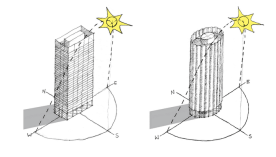When the most of us are spending more than 90% of our time awake indoors, we need to master the natural light in our buildings, for the sake of the people and environment.
Benefits of Daylight
Daylight boosts performance, improves sleep, connects us to the outside, and increases comfort. Most people prefer working near a window if given a choice. Sunlight makes us feel good when it touches our skin.
Biological and Psychological Impact
Sunlight affects our senses both biologically and psychologically. Integrating natural light into spaces creates beauty, which has a positive impact on emotional well-being. According to the publication Buildings, Beauty, and the Brain: A Neuroscience of Architectural Experience, designing spaces with beauty in mind directly impacts learning, social behavior, and emotional health.
Daylight appears differently depending on geographic location and the daily, seasonal and annual dynamics of the light and is not easy to control. The plenitude of sunlight or the lack of the same demand that the architectural profession treat it in respect for the local conditions. It quickly disappears further into the room and easily creates great contrasts and glare.

Architects’ Role in Daylight Integration
Architects have a crucial role in exploring how daylight can be integrated into architecture. They inspire new ways of thinking by treating daylight as an ongoing source of light, energy, well-being, and joy.
Innovative Ideas: Circadian Curtain Walls
HOK, an architectural firm, introduces an interesting concept: circadian curtain walls. The building's façade is shaped like a flower, providing external shading even on sides exposed to full sun. According to HOK, “The concept’s bulged windows provide external shading, making the tower on the right 75% self-shaded and the one on the left 50% self-shaded. This design allows more natural light to enter the building and reduces the reliance on view-limiting window shades to control glare.”

Image courtesy HOK
Bringing Sunlight Deep into Buildings
With Parans Solar Lighting's solution, you can create sunlight-filled spaces in every building. Thin, flexible fiber optic cables carry sunlight far from windows, deep into areas where sunlight typically cannot reach. Just as common as having windows along the façade to bring light inside, it is equally effective to use a Parans system to distribute sunlight deep into the building—reaching every room, on every floor.
Creating Amazing Light Experiences for All.

